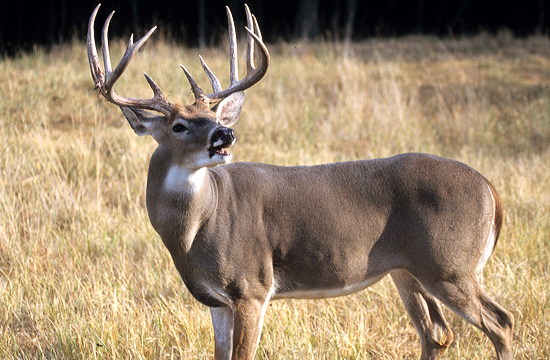BY Kevin Kelly
FRANKFORT, Ky. – Work, family and school commitments can leave little free time in a day, but hunters can help themselves by carving out some time to scout an area.

Kentucky’s archery season for deer is underway with the crossbow, youth-only firearm, muzzleloader and modern gun deer seasons still to come. So there’s time to find a place to hunt and scout it.
“I think it increases your odds of success and your chances for a big deer,” said Chad Miles, an avid deer hunter and executive director of the Kentucky Fish and Wildlife Foundation.
Studying topographical maps and satellite imagery is a good first step to learning the lay of the land and scouting more efficiently. But there’s no substitute for personal experience; walking the terrain; seeing where the deer bed, what’s available for them to eat and what routes they travel.
“If you can spend enough time at the property, know how deer move through it,” said David Yancy, deer biologist with Kentucky Department of Fish and Wildlife Resources. “Where are the chokepoints? Know the creek drainage pattern. The low spot on the ridgeline? That’s where they’re going to cross because it’s less effort. Those kinds of things are important during gun season.”
Miles prefers scouting around midday and no closer than two weeks before he plans to hunt. Any later risks spooking the deer. To limit human scent left behind, wear rubber boots and be mindful about touching or handling tree branches and leaves. Some may prefer to wear scent control clothing or spray.
Tracks, droppings and hair caught on fencing are tell-tale signs deer are in the area. Rub lines and scrapes are additional clues that show up as deer transition from their summer pattern. Deer become less visible in open spaces as acorns begin to hit the ground and the rut approaches. After the rut, available food sources and cover become all-important.
“If you’re not hunting big, timbered areas, you’re looking for bottleneck areas where you’ve got thickets near fence lines that connect forage areas,” Miles said. “Big deer are going to do their absolute best to remain out of sight as much as they can until the rut makes them crazy. They’re going to slip through those little areas where they’re going to be visible the least amount of time. I’m looking for those types of areas if I’m scouting for gun season.”
A handheld Global Positioning System (GPS) is a handy tool that can help a hunter keep track of these key spots and potential tree stand locations.
When considering a stand location, note the wind direction. This is easily accomplished with wind direction powder or by simply crumbling a dried leaf and tossing it into the air. Checking the weather online the day of a hunt can help determine where to set up.
“The quicker you can get to that stand and get your scent off the ground and create as little disturbance as possible, the best chance you’re going to be successful going after that big deer,” Miles said.
On wildlife management areas and Otter Creek Outdoor Recreation Area, hunters may use a portable stand or climbing device as long as it does not injure a tree. Nails, spikes, screw-in devices, wire or tree climbers cannot be used to attach a tree stand or climb a tree. Portable stands may not be placed in a tree more than two weeks before opening day and must be removed within a week after the last day of each hunting period. The hunter’s name and address should be clearly marked on the portable stand.
Archery season for deer in Kentucky continues through Jan. 19, 2015. Hunters set September harvest records in each of the past three seasons and the numbers indicate this season is off to another strong start. Archers reported taking more than 3,100 deer as of Sept. 18 with antlered deer making up roughly one third of the harvest total.
Scouting after the season can help a hunter get a leg up on the following year, but it’s important to be mindful of season dates. If scouting during the modern gun, muzzleloader and youth firearm deer seasons, or a firearm elk or firearm bear season, wearing hunter orange is highly recommended.
The crossbow deer seasons are Oct. 1-19 and Nov. 8-Dec. 31, while the youth-only firearms season for deer is Oct. 11-12. Muzzleloader season is Oct. 18-19 and Dec. 13-21. Statewide modern gun deer season opens Nov. 8 and continues through Nov. 17 or Nov. 23, depending on the zone.
For more information about fall hunting opportunities in Kentucky, consult the 2014-15 Kentucky Hunting and Trapping Guide. It is available online at fw.ky.gov or wherever licenses are sold.
Kevin Kelly is a staff writer for Kentucky Afield magazine, the official publication of the Kentucky Department of Fish and Wildlife Resources. Get the latest from Kevin and the entire Kentucky Afield staff by following them on Twitter: @kyafield.
-30-
The Kentucky Department of Fish and Wildlife Resources manages, regulates, enforces and promotes responsible use of all fish and wildlife species, their habitats, public wildlife areas and waterways for the benefit of those resources and for public enjoyment. Kentucky Fish and Wildlife is an agency of the Tourism, Arts and Heritage Cabinet. For more information on the department, visit our website at fw.ky.gov.


Be the first to comment